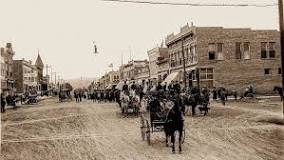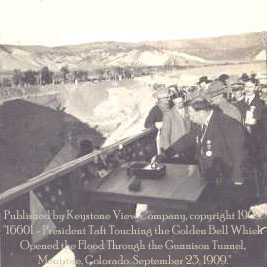Montrose County COGenWeb
COGenWeb a proud partner of USGenWeb
Montrose County
History
Gunnison county was divided in 1883, forming Montrose county.
The first settlers migrated to the Uncompahgre Valley (Un come pah gray) in the 1870s but legally were unable to purchase land until after September 1881, when the Ute Indians were removed from their land and put on a reservation in Utah. This area was settled on the heels of the Ute Indians leaving the territory.
Town of Montrose
The town of Montrose was founded in 1882, a short time after the Ute Indians were removed from the Uncompahgre Valley. Early Montrose towns were the typical frontier cow towns. Gun play, quarreling and saloon brawls were common that made history and legend.
Originally the town provided supplies to nearby mining communities. With the decline of mining, agriculture soon became the primary economy. Settlers worked the fertile valley soil producing fruits, grains, vegetables, and livestock. The first stake was driven in December of 1881 and in 1882 Montrose officially became a town.
 The Gunnison Tunnel
The Gunnison Tunnel
The tunnel was constructed to provide vital irrigation water to the valley, and opened in 1909. Its opening was highlighted by the visit of President Taft and signaled the beginning of a new era of agricultural production in Montrose.
At the turn of the century (1900), the Bureau of Reclamation created the project to build the 7 mile long Gunnison Tunnel. The result was irrigation water that turned the valley into fertile growing lands for many types of agriculture. President Howard Taft came to Montrose to dedicate the project in September of 1909.
Click HERE for photo of Taft at the opening ceremony.
The Railroad
In 1882, the Denver and Rio Grande Railroad Co. built its narrow gauge mainline railroad through Montrose on its way from Denver to Salt Lake City, Utah. In 1890 the D&RGRR completed its standard gauge railroad from Denver to Grand Junction, leaving Montrose on the narrow gauge from Salida to Grand Junction and Ouray.
In 1906, the track from Grand Junction to Montrose was changed from narrow gauge to standard gauge.
This page was last updated